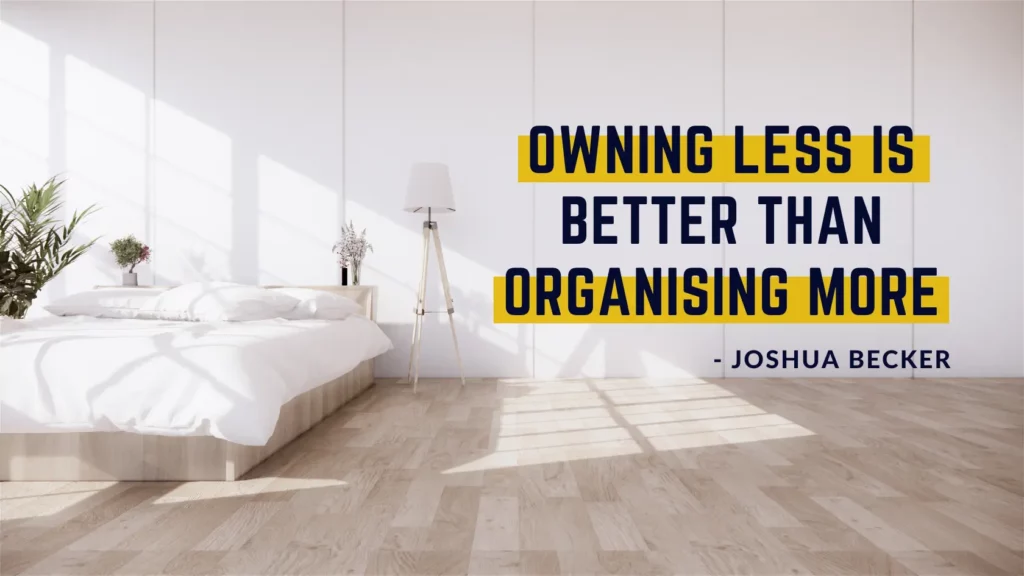In the pursuit of a tidy, functional, and harmonious living space, pinpointing clutter problem areas is the first victorious battle. Yet, the war against clutter is ongoing. It requires vigilance, a solid plan, and sometimes, a complete change in lifestyle to maintain that blissful, clutter-free existence. As British organisational expert, Jane Stoller, once said, “Organising is a journey, not a destination.”
You have armed yourself with the knowledge and strategies to tackle clutter problem areas. But, what next? How do you ensure your newly conquered spaces don’t fall back into the realm of chaos?
Where Are The Most Common Clutter Problem Areas?
Most clutter problem areas can be found in high-traffic and commonly used spaces within the home. These include living rooms, bedrooms, kitchens, and bathrooms. Other common clutter hotspots are closets, cabinets, and shelves where items are often shoved into without proper organization or decluttering.
Additionally, workspaces such as desks, study tables, and home offices can become cluttered quickly due to the constant influx of paperwork and other items. Even entryways and hallways, which are meant to be clear passageways, can become cluttered with shoes, coats, bags, and other items that get strewn about.
How To Conquer Your Clutter Problem Areas
Now that you have identified your clutter problem areas, it’s time to put your plan into action. Here are some tips to help you maintain a clutter-free environment:
Establish New Habits
After identifying and addressing your clutter problem areas, maintaining that pristine state is paramount. Begin by instilling habits that promote cleanliness and order. Adopt the ‘one in, one out’ rule – for every new item brought into the space, an old one must leave. This helps to mitigate the accumulation of belongings that can quickly spiral into disarray.
Foster Mindfulness
Joshua Becker, a renowned minimalist, expressed, “Owning less is better than organising more.” The essence of this wisdom lies in being conscious of your acquisitions. Each item in your home should serve a purpose or spark joy. Before any purchase, assess its necessity and the value it adds to your life. It’s not just about having organised chaos but reducing the chaos altogether.

Create Zones
Every item should have a ‘home.’ In places like the living room or bedroom, which can quickly become clutter problem areas, designate zones for specific items. It’s about fostering a sense of belonging for each possession, ensuring ease of access and minimal effort in tidying up. Having designated zones also helps to keep items visible and reduce the chances of forgetting about them.
Keep a Clutter Journal
Consider maintaining a clutter journal to jot down observations about how clutter accumulates in your space. Identify patterns and establish preventive measures. It serves as a reflective tool, offering insights into consumption habits and space utilisation. It can also serve as a reminder of how far you’ve come, motivating you to keep the clutter at bay.
Be Kind to Yourself
It’s easy to become overwhelmed and revert to old habits, especially in the beginning. Remember that decluttering and organising are ongoing processes – it’s not a race. Acknowledge your progress and celebrate your victories, no matter how small. Be kind to yourself, and don’t let minor setbacks discourage you. The journey towards a clutter-free life is long, but the rewards are worth it.
Remember, as the saying goes, “A tidy home equals a tidy mind.” So keep going, one step at a time. There will always be new challenges to face, but with determination and persistence, maintaining a clutter-free existence is achievable. The key is to continue implementing the habits you’ve learned and to foster mindfulness in your daily life. And most importantly, be kind to yourself throughout the process – decluttering is not an easy task, but it’s always worth it in the end.
Regular Maintenance
Just like a garden requires consistent weeding and pruning, your home needs regular maintenance. Schedule time for decluttering tasks, like sorting through mail or rearranging wardrobe shelves, at least once a week. It’s essential to remain proactive rather than reactive in keeping your living space clutter-free.
Special Focus: The Digital Clutter Problem Areas
In the digital age, clutter is not confined to physical spaces. Digital clutter, from an overflowing email inbox to a desktop littered with icons, contributes to mental clutter. Tackle this by organising files into folders, unsubscribing from unwanted emails, and utilising cloud storage for important documents. Not to mention arranging all of your digital files and photographs! If you have photo albums or photo books, read this guide on “Preparing and Storing Photographs”.
The poet William Morris captured this essence beautifully: “Have nothing in your house that you do not know to be useful, or believe to be beautiful.” Make these words the cornerstone of your clutter-free journey and watch your space, and by extension, your life, transform into a haven of peace, functionality, and bliss.
Self Storage Can Help Keep Clutter Problem Areas Clear
A self storage unit is a practical solution in the ongoing effort to combat clutter. It’s more than just an extra space; it’s a resourceful way to keep your home organised and free from excess items. Utilising a storage unit allows you to create a living environment that is streamlined and efficient. By moving rarely used or seasonal items into storage, you free up space in your home for everyday living.
A storage unit isn’t just about tucking things away; it’s about enhancing your living space, making it more functional and enjoyable. Your stored items are not only secure but are easily accessible, ensuring that your home remains uncluttered and well-ordered. It’s an easy, versatile and affordable way of keeping those clutter problem areas in check.
Visit the website for more information about our storage unit sizes and prices. Don’t know the right storage unit size? Maybe this guide can help: What Can I Fit Into A 10×10 Storage Unit?